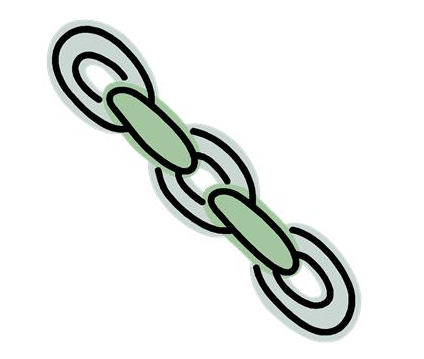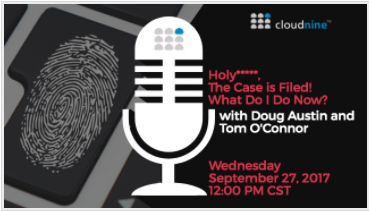Chain, Chain, Chain – Chain of Custody: eDiscovery Throwback Thursdays
Here’s our latest blog post in our Throwback Thursdays series where we are revisiting some of the eDiscovery best practice posts we have covered over the years and discuss whether any of those recommended best practices have changed since we originally covered them.
This post was originally published on June 24, 2013 – over six years ago. Back then, we referenced both baseball player Ryan Braun and legendary singer Aretha Franklin in a single post(!). Braun ultimately did receive a suspension from Major League Baseball for his involvement with a clinic associated with performance enhancing drugs, but has resumed a successful playing career. And, of course, the Queen of Soul is no longer with us, sadly.
As for chain of custody tracking, it’s as important as ever. But technology has helped us out here with some mechanisms to automate the delivery of files. The use of File Transfer Protocol (FTP) for transfer of files has become commonplace for even fairly large document sets and the use of secured FTP protocols (such as SFTP and FTPS) have become commonplace. At CloudNine, most of the data we receive from clients today for loading into our CloudNine Review platform is received via secured FTP – either directly or through our Discovery Client that automates the loading of data into the platform.
However, our Client Services team still receives some data from clients via media transportation, especially when it’s a lot of data (we’re often talking terabytes, not gigabytes) and needs to get to us quickly and securely. In those instances, we still follow the same chain of custody procedures described below to document that transfer. When it comes to those types of transfers, ensuring proper chain of custody tracking is also an important part of handling that ESI through the eDiscovery process in order to be able to fight challenges of the ESI by opposing parties. An insufficient chain of custody is a chain, chain, chain of fools.
Information to Track for Chain of Custody
ESI can be provided by a variety of sources and in a variety of media, so you need a standardized way of recording chain of custody for the ESI that you collect within your organization or from your clients. At CloudNine, we use a standard form for capturing chain of custody information. Because we never know when a client will call and ask us to pick up data, our client services personnel typically have a supply of blank forms either in their briefcase or in their car (maybe even both).
Our chain of custody tracking form includes the following:
- Date and Time: The date and time that the media containing ESI was provided to us.
- Pick Up or Delivery Location: Information about the location where the ESI was provided to us, including the company name, address, physical location within the facility (e.g., a specific employee’s office) and any additional information important to note where the data was received.
- Delivering Party: Name of the company and the name of representative of the company providing the media, with a place for that representative to sign for tracking purposes.
- Delivery Detail (Description of Items): A detailed description of the item(s) being received. Portable hard drives are one typical example of the media used to provide ESI to us, so we like to describe the brand and type of hard drive (e.g., Western Digital My Passport drive) and the serial number, if available. Record whatever information is necessary to uniquely identify the item(s).
- Receiving Party: Name of the company and the name of representative of the company receiving the media, with a place for that representative to sign for tracking purposes. In our form, that’s usually somebody from CloudNine Discovery, but can be a third party if they are receiving the data from the original source – then, another chain of custody form gets completed for them to deliver it to us.
- Comments: Any general comments about the transfer of media not already addressed above.
I’ve been involved in several cases where the opposing party, to try to discredit damaging data against them, has attacked the chain of custody of that data to raise the possibility that the data was spoliated during the process and mitigate its effect on the case. In these types of cases, you should be prepared to have an expert ready to testify about the chain of custody process to counteract those attacks. Otherwise, you might be singing one of Aretha Franklin’s most famous songs (but not as well as she did).
So, what do you think? How does your organization track chain of custody of its data during discovery? Please share any comments you might have or if you’d like to know more about a particular topic.

Sponsor: This blog is sponsored by CloudNine, which is a data and legal discovery technology company with proven expertise in simplifying and automating the discovery of data for audits, investigations, and litigation. Used by legal and business customers worldwide including more than 50 of the top 250 Am Law firms and many of the world’s leading corporations, CloudNine’s eDiscovery automation software and services help customers gain insight and intelligence on electronic data.
Disclaimer: The views represented herein are exclusively the views of the author, and do not necessarily represent the views held by CloudNine. eDiscovery Daily is made available by CloudNine solely for educational purposes to provide general information about general eDiscovery principles and not to provide specific legal advice applicable to any particular circumstance. eDiscovery Daily should not be used as a substitute for competent legal advice from a lawyer you have retained and who has agreed to represent you.













